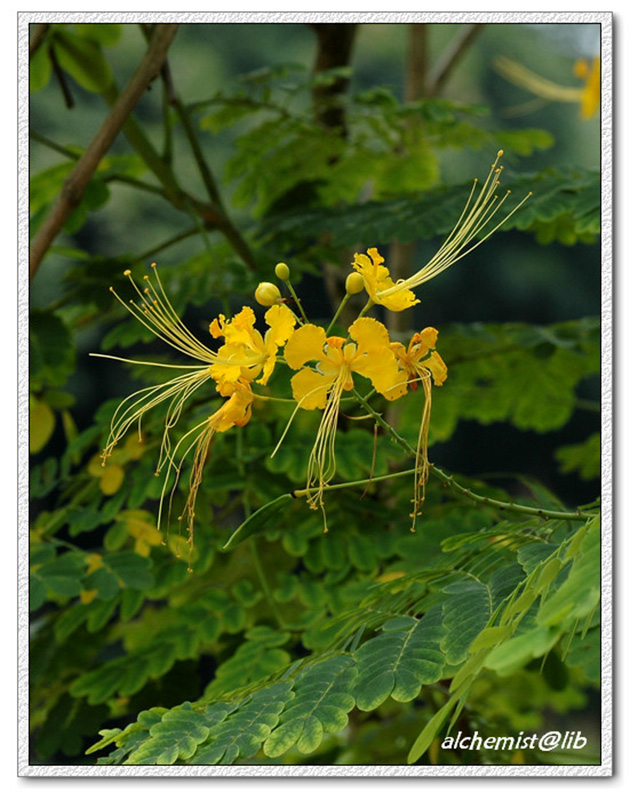金凤花 Caesalpinia pulcherrima

- Scientific Name: Caesalpinia pulcherrima (L.) Sw.
- Ref: Observ. Bot.: 166. 1791
- Synonyms: Caesalpinia hispida (G.Don) D.Dietr.; Poinciana alata Burm.f.; P. bijuga Burm.f.; P. hispida G.Don; P. pulcherrima L.; Radackia amicorum Cham. & Endl.
- English Common Name: poinciana, peacock flower, red bird of paradise, Mexican bird of paradise, dwarf poinciana, pride of Barbados
- Chinese Common Name: 金凤花 jīnfèng∙huā, 洋金凤 yáng∙jīnfèng
- Japanese Common Name: オウコチョウ [黄胡蝶] ōkochō
- Family: Fabaceae
- Genus: Caesalpinia
- Distribution: Cultivated in Fujian, Guangdong, Guangxi, Hainan, Taiwan, Yunnan [native to South America; cultivated throughout the tropics].
- Photo: 06/21/2009, South China Botanical Garden, Guangdong
Shrubs or small trees. Branches green or farinose-green, smooth, with scattered, sparse prickles. Leaves 12-26 cm; pinnae 4-8 pairs, opposite, 6-12 cm; petiolules short; leaflets 7-11 pairs, oblong or obovate, 1-2 cm × 4-8 mm, base oblique, apex emarginate, sometimes acute. Racemes subcorymbose, terminal or axillary, lax, to 25 cm. Pedicels unequal in length, 4.5-7 cm. Receptacle concave to turbinate, glabrous. Sepals 5, glabrous, lowest one ca. 1.4 cm, others ca. 1 cm. Petals orange-red or yellow, orbicular, 1-2.5 cm, margin wavy, with claw subequal to limb in length. Stamens very far exserted; filaments red, 5-6 cm, thick and hairy in basal part. Ovary glabrous; style orange-yellow, long, 5-6.5 mm. Legume blackish brown when ripe, oblanceolate-oblong, narrow and thin, 6-10 × 1.5-2 cm, not winged, glabrous, indehiscent, apex rounded, upper suture ending in a sharp beak. Seeds 6-9. Fl. and fr. year-round. 2n = 24, 28. (Flora of China)